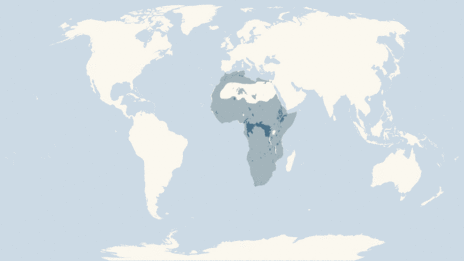Within Africa there are two recognized species of elephants, Loxodonta africana, the bush or savannah elephant and Loxodonta cyclotis, the forest elephant. Each species of elephant produces a different type of ivory that can be categorized as hard or soft. Generally, bush elephant ivory is considered fairly hard while forest elephant ivory is considered soft, although the colour and hardness varies in individuals depending on diet as well.

A forest elephant in Gabon
Poaching is having significant impacts on both of these elephant species however considerably less is known about the forest elephant than the bush elephant. This means its conservation status and population numbers are much more difficult to determine and the impacts of poaching are more difficult to detect. This is due to several reasons, one of the largest being that up until very recently, they were thought to be the same species as, or a subspecies of the bush elephant and thus assumed to have the same biology. In fact, the two are actually very different and are thought to have been mostly separate for 2-7million years.
Other reasons that poaching is such a concern for the forest elephant is their relatively small range compared to that of the bush elephant. Forest elephants tend to live only in dense forest in central and west Africa, which makes it very difficult for researchers to estimate population sizes or understand their biology given that these regions are very hard to access, and populations can’t be seen from helicopters due to the dense forest.

Bush elephant (light blue) and Forest elephant (dark blue) ranges (image from WWF Wildfinder)
